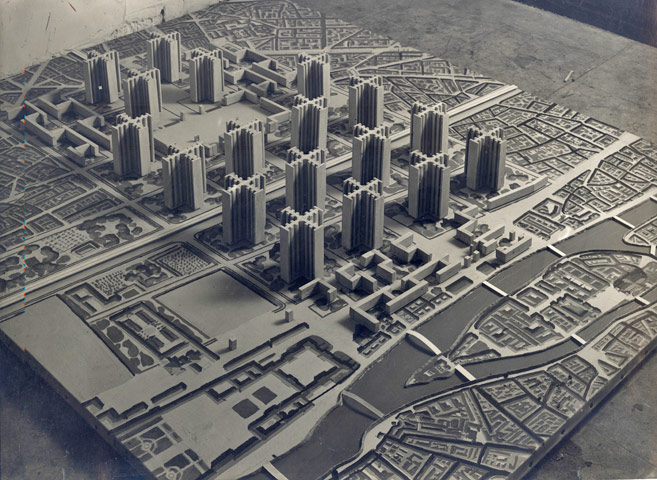Fr : version française / En: english version
mheu, Historical Museum of the Urban Environment
Model of the Voisin Plan for Paris
Le Corbusier

1925
© Fondation Le Corbusier
View this work in the exhibition Babel to Dubai: Urban Utopias
The artist
The architect Le Corbusier was born Charles-Edouard Jeanneret-Gris in Switzerland in 1887. After finishing art school, he found work as a designer for the architectural firm Auguste Perret, and met Van der Rohe and Gropius. A proponent of the plan libre, which proposed free façades involving non-supporting walls, he developed a brand-new style, taking into account the lifestyles of his contemporaries. At the Athens congress, he declared that: "The materials of urban planning are sun, space, trees, steel and reinforced concrete, in that order."
He began his career in architecture by designing private villas, but he quickly came to turn his attentions to urban planning. His "plan for a contemporary city of three million people" laid the foundations for modern architecture. His career took off in the post-war period, when he designed a series of collective developments, such as La Cité Radieuse in Marseilles and complete cities such as Chandigarh in India, took part in international competitions (UN building in New York), took stances on a range of issues, and garnered international fame. He died while swimming in 1965.